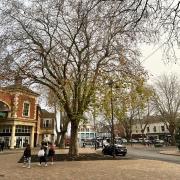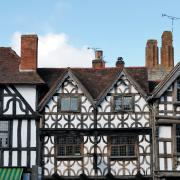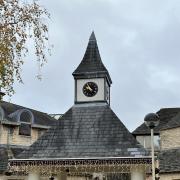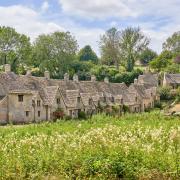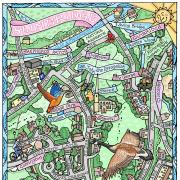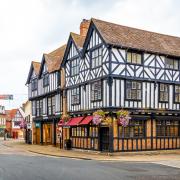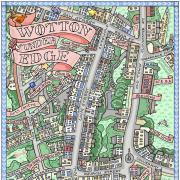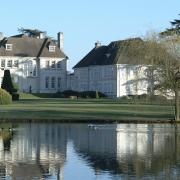Sezincote’s gardens offer something different in the Cotswolds
As a counterpoint to the endless herbaceous borders and rose-covered walls of the Cotswolds, little beats a visit to Sezincote.
Rising up out of parkland trees, the onion-domed roof and ornate ironwork are the first hint that this is a garden with a different agenda.
Its formal space is not one of clipped box and rolling lawns but long canals and a four-square design, imitating the Paradise Gardens of the Mughals.
Like many Cotswold gardens, it has water but this is a spring-fed stream and manmade pools punctuated by Indian stonework – sculptures of Brahmin Bulls, a temple and Indian bridge with stepping stones and columns underneath.



There’s a sense of disconnect with the outside world and a tranquillity that makes it the perfect place of escape.
Sezincote was originally conceived in 1805 as a way of imitating art – apt as gardening is so often described as painting with plants. In particular, it was echoing Thomas Daniell’s paintings of India.
The then owner Charles Cockerell had a vision of Sezincote being somewhere he and his guests could wander through an exotic painting.

Daniell worked alongside Cockerell’s brother, the architect Samuel Pepys Cockerell, to create this vision, and landscape gardener Repton added his suggestions.
The result was a garden that tried to replicate the romantic and rather wild landscapes around the palaces and temples Daniell had painted.
Changes came at Sezincote in the 1950s when it was bought by Sir Cyril and Lady Kleinwort.

By then, the garden was very neglected: ‘My mother remembers being sent with her sisters and a scythe each to attempt to discover the location of the pools down the stream, which had sprung leaks, dried up, and been swallowed in overgrown vegetation,’ says current owner Edward Peake, who took over Sezincote from his mother 17 years ago.
The Kleinworts brought in leading horticulturist Graham Stuart Thomas to advise them. The result was the overlaying of the original Daniell’s stream garden with a series of flower borders filled with perennials, including hostas, astilbe and astrantia.
Following a trip to India in the 1960s, the couple created the Paradise Garden on what was the south lawn, using Irish yews to mimic the cypresses that are found in India.
‘I’m sure Thomas Daniell and Charles Cockerell would have approved – especially of the way the Indian Garden with its canals creates a new view reminiscent of the Taj Mahal – a new painting for us to enter and enjoy as a participant and not just a spectator,’ says Edward.

Under his tenure, the garden is entering yet another phase with a closer realigning of the stream garden to Daniell’s original vision. In addition, new areas are being developed, designed to provide an easier transition from the garden to the countryside beyond.
Borders along the stream, which had crept out over the decades, are being reined in and, in places, removed to allow access to the stream bank.
Head gardener Greg Power and his team have been cleaning vegetation off the rocks – limestone from local quarries that was unfit for building – revealing their natural beauty. The pools that repeat down the stream have also been cleaned, leaving the water sparkling.

In what was a small rockery garden overgrown with geranium and other perennials, the planting has been cleared and the rocks left bare as natural. Nearby, a pagoda tree has had its skirts lifted, allowing views to the waterfall.
A longer battle is dealing with ground elder and Spanish bluebells that have infested some areas. A combination of digging and spraying seems to be working, while Greg is planning to crowd out horsetail in another part with companion planting, such as rodgersia, comfrey, and flag iris.

‘If I just swamp it out a little bit, it might still come through the planting, but it won't be as dominant a feature,’ says Greg.
He’s planning to introduce more seasonal interest with grasses and hydrangeas, while the far end of the stream, is going to be brought back into the garden with gunnera, Darmera peltata and shade-loving plants in big blocks, along with masses of camassia.
‘It just seems slightly lost down here,’ he comments.

Changes in the Indian garden have been minimal – adding citrus to the Orangery, cutting back an overgrown holly hedge and replacing tall cordylines with a lower growing variety that is more in proportion with the urns that house them.
Part of Sezincote’s charm are the views across the garden that change as you move through it. Many of these had been blocked as trees and shrubs, particularly laurel, have got bigger.
These are being tamed with the tree canopy lifted and the laurel cut back hard and, in places removed, allowing the team to plant a wider range of shrubs.
Elsewhere, overgrown philadelphus has been reduced and the skirts of trees and shrubs lifted to allow more planting underneath, while a small garden area overlooking the house has been rejuvenated and is proving popular with visitors.
The edges of the stream garden are being softened by areas of long grass and mown paths. These blur the boundary with neighbouring fields and give the garden a more romantic feel.

‘We’re leaving the grass long in sections where there have been bulbs and we’re finding orchids popping up everywhere,’ comments Greg.
‘It’s a garden in the countryside so it’s nice to have more meadows than just mown grass everywhere.’
On a hill overlooking the Indian Garden, this idea has been extended to make a full wildflower garden with mown paths above avenues of quince trees and damask roses.

‘It’s intermediate both in place and style between the farm and the formal gardens below,’ says Edward.
The links to India are now reinforced with fragments of Sufi poetry on steps in the Indian Garden, including Agar ferdows bar ruyi zamin ast/ Haminast o haminast o haminast!
It translates as: If paradise exists on the face of the earth/ It is here! It is here! It is here!
It seems an apt description of Sezincote.
Sezincote, Moreton-in-Marsh, GL56 9AW, sezincote.co.uk
Sezincote Garden is open January to November on Wednesdays, Thursdays, Fridays & Bank Holiday Mondays. The House, Garden and Orangery Tearoom are open May to September on Wednesdays, Thursdays, Fridays & Bank Holiday Mondays.
Twitter: @ChattyGardener
Facebook: The Chatty Gardener
Instagram: @thechattygardener








